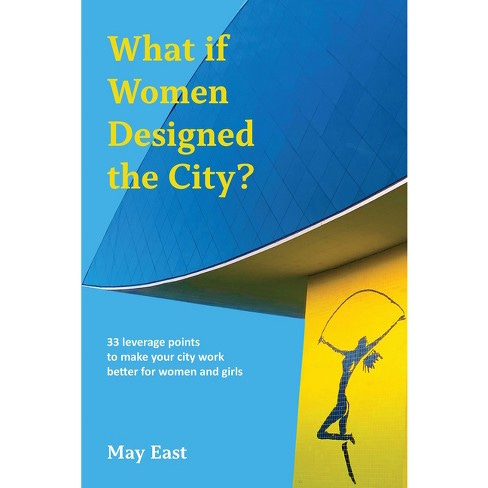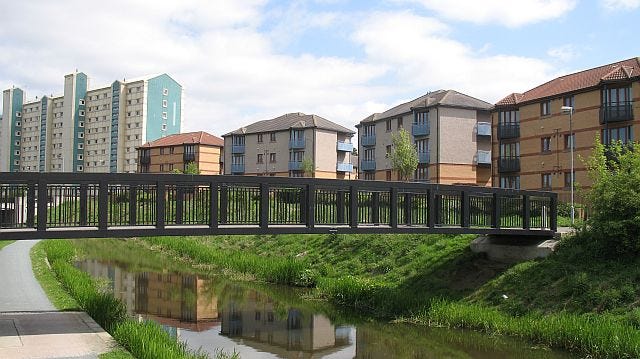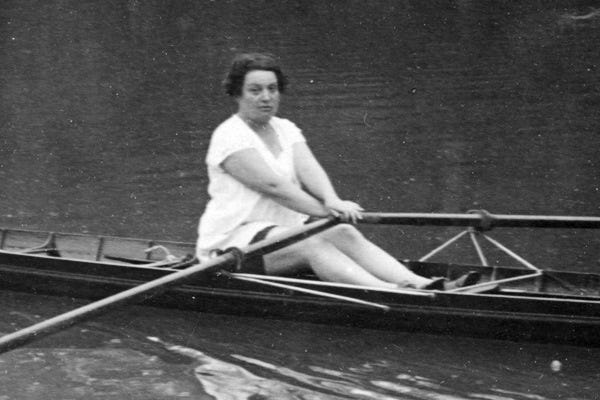30 July 2024. Cities | Sport
What if women designed the city? // Showing the underside of Olympic history [#592]
Welcome to Just Two Things, which I try to publish three days a week. Some links may also appear on my blog from time to time. Links to the main articles are in cross-heads as well as the story. A reminder that if you don’t see Just Two Things in your inbox, it might have been routed to your spam filter. Comments are open.
1: What if women designed the city?
The Library of Mistakes in Edinburgh is a free public library about financial history and the future of finance. This makes it sound less interesting than it is, since it also runs a programme of talks —in person and online—that take a broad view of finance.
A couple of months ago I watched May East—a Brazilian researcher based in Scotland—talk about her research about what women want from cities, which she has also published as a book, What If Women Designed The City recently. (I’ll acronym this as IWDTC from here on).
In her introduction, East explained why she was interested in cities. In brief: because the future of the biosphere will be decided in the cities of world. They account for 4% of the planet’s surface, but 80% of emissions, and 70% of the nutrients that are consumed.
Of that 4% nearly half is covered by roads and car parks.
Globally, there are three big trends shaping cities.
Urbanisation is still accelerating. New urban building covers the equivalent of a city the size of Paris every five days.
Currently 52% of the world’s population lives in cities, and that is projected to increase to 72% by 2050. (I couldn’t see a source for this projection, but the slides were quite small on my online feed.)
And cities have to find ways to make themselves more resilient in the face of climate change. Both to increased and to greater risks of flooding.
One of the features of cities is that historically they have been designed by men and they work better for men than for other urban dwellers (such as women, children, people with disabilities). Improving this is about reducing the dominance of the car in the cities.
East shared a memorable quote about this from an MIT report:
“I am completely bored with smart systems that optimise the flow of cars. I am more interested in getting rid of cars from cities.”
In doing this, she suggested three organising principles. The first is that there are really only two scenarios for the future of cities: climate transition will happen, and we will either design it or we will fail to design for it
Second: we’re already at a point where sustainability is not enough. If we’re going to deal with climate change we need to get to a regenerative way of life.
Third: we need to move beyond problem solving, and to work with the potential in each place.
How did Britain get to where it is now? Broad brushstrokes, but the story goes back to the end of the second world war, with Britain bankrupted by victory, and housing was lacking in both quality and quantity. Some of this was a result of wartime bombing, but much of the pre-war housing that was still standing was terrible.
Concrete was the solution to this—the so called “brutalism”, which East said, came from the French for “raw concrete” (‘beton brut’).1 Concrete is still the second most used material after water on the planet.
British architects were inspired by a whole generation of French architects who were building with modular systems—but the modules matched male proportions. This may not have been deliberate, but it was perhaps inevitable, since there were hardly any female architects around to get involved.
(Wester Hailes. The canal had been filled in but was reopened in 2000. Photo: Richard Webb, Geograph. CC BY-SA 2.0.)
All of this was married to the growth of the car. East talked about places like Wester Hailes, just outside Edinburgh, built to rehouse people after slum clearance. She quoted a resident in a documentary about the place who said,
““What the planners gave us was houses, they gave us car parks and roads and nothing else”.
Mass motorisation was built into the fabric of post-war urban design, in other words.
What if women designed the city? The top line of her research says that they would be designed for proximity, not mobility.
It is worth saying something about her research method. She did walking interviews with 274 women in three Scottish cities (Glasgow, Edinburgh, and Perth), focussing on two neighbourhoods in each. (274! That’s a lot of interviews).
With each interview she let the women she was talking to choose the route, and they lasted from 30 minutes to 90 minutes each. From each interview she collected spatial and visual data as her interviewees moved through their neighbourhoods. The benefit of walking interviewees is that they also create the opportunity for serendipity.
She took us through some of the prompts she used in the interviews. Some of these were designed as what she called “regenerative” questions:
What is unique about the neighbourhood?
What is the potential here that you haven’t seen before?
She also asked about “restraining forces” and the “network of responsibilities”, and the role of her interviewees in these local networks.
She then identified what she calls “leverage points” from the mass of data, eventually identifying 33 of these. From these she created some flashcards—for example, “Cultivating biophilia”, with an image or a photo and some bullet points on it.
By way of some (unexpected) audience interactivity, she then distributed a set of the leverage point cards to the audience and asked them to discuss their cards with other audience members in three quick conversations. (This produced a lot of energy in the room).
There was a bit of feedback afterwards where she got people to give her a number between one and 33, and then asked the person holding that card to tell us their conversation. This allowed us to get a handled on the kinds of things that were on the cards
LP12, for example, was about “Improving natural surveillance by design”—which East told us was “basically about nosy neighbours”. The person who read this out said that they don’t even know their neighbours’ names.
If women designed the city, safety would be prioritised, but through people, not through more cameras. This is what proximity means in practice. And one approach to this is to retrain parking wardens as community wardens.
LP7 was about devising a library of women-tailored saddles. This turned out to be a good example of why East’s research matters. Men cycle 80% more than women, and she asked her interviewees about why this was. The answer: it’s not very comfortable, because the saddle is not suited for my anatomy.
And Portobello, near Edinburgh, now has a library of saddles for women.
LP27 was, “Infusing beauty in cities in form and function.” Space needs to be clean as well as stimulating your senses, especially in housing estates: they need to be green, but that needs to involve more than grass.
East’s research suggests that women like to spend time in places that feel more natural, and pockets of nature are now starting to be seen in cities.
And one more leverage point, that I didn’t catch the number of. Pavements aren’t designed to accommodate high heels and get rid of trip hazards (there were some whoops and claps in the audience at this point.) But there’s much more investment in roads than pavements.
East suggested a wider point: that traffic engineers should spend a week pushing a pram around the city before they are allowed to start designing anything.
There were a few points from the questions that are worth sharing. Women say they want to have places to be together, but at the moment all of these require consumption. IWDTC, there would be places to be together without having to consume.
People who aren’t women might welcome this too. There’s a growing movement on women-centred urban design, and cities like Vienna, Paris and Barcelona are taking a lead on what this looks like in practice. East discussed a recent conference attended by 132 planners from 32 countries, which concluded that “designing cities for women and girls means designing cities for everyone.”
(Murrayburn and Hailes Neighbourhood Garden. Photo credit: May East.)
Such design doesn’t need to be a feature of affluence. East talked about Wester Hailes because it was one of her research locations, but it isn’t a well-off area. All the same, there are initiatives there about greening and natural medicine, with a health clinic, the use of herbal recipes, and a project that encouraged people to grow their own herbs
Right at the end, someone in the audience asked a car-focused question that made me think they had not listened to any of the talk.
East’s answer: “If women designed the city, cities would be for people, and cars would be invited in only as guests.”
She has an article about her research on The Nature of Cities blog. I have ordered the book.
2: Showing the underside of Olympic history
One of the requirements of hosting the Olympics is that you also host a parallel cultural programme—it’s an echo, I guess, of the early modern Olympics where artists also competed for medals.
So there are several Olympics-themed exhibitions in and around Paris, and Apollo magazine went to have a look. (This should be in front of their paywall).
This extract is from their visit to the ‘Olympisme’ exhibition being hosted in the Palais de la Porte Dorée, now a museum of immigration but built in the 1930s as a “permanent museum of the colonies.”
(Alice Milliat. Photographer unknown. CC BY-SA 3.0)
So, perhaps unsurprisingly it focuses on people who were excluded from the Olympics, such as women, and on those athletes who broke into Pierre de Coubertin’s essentially white version of the games:
We see Alice Milliat, who fought for equal sporting rights for women and set up the Women’s World Games in 1922, looking justifiably piqued in a scull. There are large photographs of Jim Thorpe and Ahmed Boughèra El Ouafi, respectively the first Native American and North African to win gold medals. Both were later shunned by the IOC for daring to earn much-needed income as athletes, thus breaking the Olympic rule enforcing amateurism.
The exhibition covers the Black Power salute at the Mexico Games in 1968, and also mentions the demonstrations in Mexico City before the 1968 Olympics in which hundreds of protestors killed by Mexican police, an event that usually gets airbrushed out of Olympic history. Half a million protestors gathered in gathered in Plaza de las Tres Culturas in Tlatelolco, chanting, "We don't want Olympics, we want revolution!". They were surrounded by 5,000 police, who opened fire on them.
In France, Alice Milliat has been celebrated in recent years, while Pierre de Coubertin has been nudged to the edges because of his misogynistic views on women and his belief in white superiority:
In 2021 a statue of Milliat was unveiled at the French Olympic headquarters, to stand alongside that of the father of the modern Olympic movement, Pierre de Coubertin... [de Coubertin’s] name has hardly been mentioned in Paris 2024’s official promotion material, while President Macron has refused calls by French IOC members to induct him into the Panthéon.
However, as the Apollo article notes, criticising the history of the International Olympic Committee seems to be beyond the pale in the cultural programme of the Olympic Games. Even though there’s no shortage of material.
j2t#592
If you are enjoying Just Two Things, please do send it on to a friend or colleague.
This seems to be contested. Reyner Banham made this argument in a 1965 essay, but according to Wikipedia an earlier derivation was from the Swedish phrase nybrutalism.







If Women Designed The City.
A chapter in ‘invisible women’ about snow clearance (ie that the roads get cleared and the pavements don’t, despite the huge numbers of injuries suffered by, you guessed it, women and children and the old, aka pedestrians) due to road clearance being planned and organised by and for men seems highly relevant here.